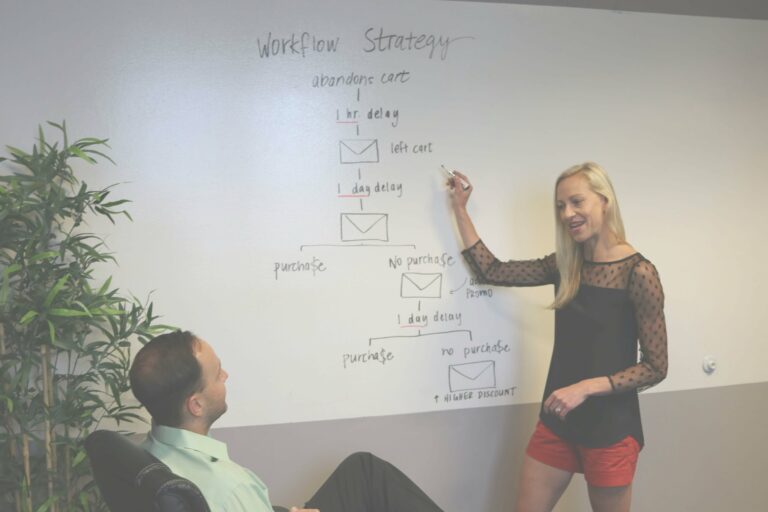Website Design for Conversions: The Ultimate Guide to Boosting Your Online Success
In today’s digital landscape, having a website is no longer enough. To truly succeed online, you need a website that not only looks great but also converts visitors into customers. At Web Design London, we specialize in creating websites that are designed with conversions in mind. In this comprehensive guide, we’ll explore the art and science of website design for conversions, providing you with valuable insights and actionable strategies to transform your online presence.
Key Elements of High-Converting Website Design
Effective website design for conversions hinges on several key elements:
- User Experience (UX): A seamless user experience is crucial. Design should focus on intuitive navigation and quick access to information. For more on enhancing UX, check out this guide.
- Visual Appeal: A visually appealing design can significantly impact first impressions. Utilize colors and layouts that resonate with your target audience. Learn about effective design principles from OptinMonster.
- Call-to-Action (CTA): Clear and compelling CTAs guide users towards desired actions. Ensure they are prominently displayed and persuasive.
- Content Quality: High-quality, relevant content keeps visitors engaged. Incorporate SEO best practices to improve visibility and attract organic traffic.
From improving website session duration to implementing effective local SEO strategies, we’ll cover all aspects of creating a high-converting website that drives results for your business. By focusing on these elements, you can create a powerful online presence that not only attracts visitors but also converts them into loyal customers.
Understanding Website Design for Conversions
Website Design for Conversions
Website design for conversions is the process of creating and optimizing a website with the primary goal of turning visitors into customers or leads. It involves a careful blend of aesthetics, user experience, and persuasive elements that guide users towards desired actions, such as making a purchase, signing up for a newsletter, or requesting a quote. Effective conversion-focused design requires a deep understanding of user engagement strategies and techniques to increase session duration.
To achieve optimal results, businesses often seek the expertise of professional web designers who specialize in creating high-converting websites. These experts focus on key elements such as clear call-to-actions, intuitive navigation, and optimized URL structures to enhance both user experience and search engine visibility. Additionally, ongoing web support is crucial for maintaining and improving conversion rates over time.
Incorporating proven design principles can significantly boost conversion rates. For example, using contrasting colors for call-to-action buttons can draw attention and encourage clicks. Furthermore, ensuring that the website is mobile-friendly is essential as more users are accessing websites via their smartphones. A responsive design not only improves user experience but also positively impacts search engine rankings.
Ultimately, the goal of website design for conversions is to create an engaging and seamless user journey that leads to higher conversion rates. By focusing on user-centric design and leveraging analytics tools to track performance, businesses can continually refine their strategies to meet customer needs effectively.
Key Elements of Website Design for Conversions
Website Design for Conversions
To create a website that effectively converts visitors, several key elements need to be considered:
- Clear Call-to-Action (CTA): Implement prominent and compelling CTAs that guide users towards desired actions. This is crucial for directing user behavior and enhancing conversion rates, as highlighted in web design principles.
- User-Friendly Navigation: Ensure easy navigation to help visitors find information quickly and effortlessly. A well-structured navigation menu can significantly improve user experience and retention, as discussed in examples of successful websites.
- Mobile Responsiveness: Design a responsive website that works seamlessly across all devices. With the increasing use of mobile devices, responsive design is essential for maintaining user engagement.
- Engaging Content: Provide valuable, relevant content that addresses your target audience’s needs and interests. Engaging content not only attracts visitors but also encourages them to take action, as noted in high-converting website strategies.
- Fast Loading Speed: Optimize your site’s performance to reduce bounce rates and improve user experience. Websites that load quickly are more likely to retain visitors, a fact supported by research from VWO’s design principles.
- Trust Signals: Incorporate testimonials, reviews, and security badges to build credibility. Trust signals are vital for reassuring visitors about the reliability of your site, as emphasized in guidelines on driving conversions.
- Effective Use of White Space: Utilize white space to improve readability and focus attention on key elements. Proper spacing can enhance the overall aesthetic of your site, making it more appealing to users.
- Compelling Visuals: Use high-quality images and videos to enhance your message and increase website session duration. Visual content plays a crucial role in engaging users and conveying information effectively.
- A/B Testing: Continuously test and refine your design elements to optimize conversion rates. A/B testing allows you to identify what works best for your audience, ensuring your website remains effective over time.
By implementing these strategies and working with a professional website design service, you can create a powerful online presence that drives conversions and supports your business goals.
Strategies for Implementing Conversion-Focused Design
Now that we’ve covered the key elements, let’s dive into specific strategies for implementing website design for conversions:
- Optimize your landing pages: Create focused, clutter-free landing pages that align with your marketing campaigns and clearly communicate your value proposition. For insights on effective designs, check out these examples of good homepage design.
- Implement clear and compelling CTAs: Use action-oriented language and strategic placement to guide visitors towards desired actions. Consider reviewing web design principles that enhance conversion rates.
- Leverage social proof: Incorporate testimonials, reviews, and trust badges to build credibility and encourage conversions. This tactic is discussed further in examples of websites that convert.
- Streamline navigation: Ensure intuitive site structure and easy-to-use menus to help visitors find what they’re looking for quickly.
- Optimize for mobile: Create a responsive design that provides a seamless experience across all devices. For more on this, see how to design a website that drives conversions.
- Use persuasive copywriting: Craft compelling headlines and content that address your audience’s pain points and highlight your unique selling points. Techniques for this can be found in design principles to increase conversions.
- Implement A/B testing: Continuously test and refine your design elements to improve conversion rates over time. This iterative approach is essential for optimizing performance.
By implementing these strategies and focusing on user experience, you can create a website that not only looks great but also effectively drives conversions and supports your business goals.
The Web Design London Approach to Conversion-Focused Design
Website Design for Conversions: Crafting High-Performing Digital Experiences
At Web Design London, we understand that every business is unique, and there’s no one-size-fits-all approach to website design for conversions. Our process involves a comprehensive strategy that combines aesthetics with functionality to create websites that not only look great but also drive results.
Key Elements of Conversion-Focused Design
- User-Centric Design: We focus on creating intuitive layouts and navigation that guide visitors towards desired actions, enhancing website session duration. This includes implementing clear call-to-actions (CTAs) and optimizing homepage design for increased conversions.
- Responsive Development: Our WordPress web development ensures your site performs flawlessly across all devices, providing a seamless user experience that’s crucial for conversions.
- Accessibility Compliance: We adhere to website accessibility guidelines to make your site inclusive and compliant, expanding your potential audience and improving overall usability.
- Local Optimization: For businesses in specific areas, we offer specialized website design in Islington and other London boroughs, tailoring our approach to local markets and customer preferences.
- Ongoing Support: Our web maintenance services ensure your site remains up-to-date, secure, and effective in driving conversions long after the initial launch.
Conversion-Boosting Design Principles
To create websites that convert, we incorporate proven design principles that increase conversions:
- Clear Value Proposition: We ensure your unique selling points are immediately visible and compelling.
- Streamlined User Journey: By simplifying navigation and reducing friction points, we guide users smoothly towards conversion goals.
- Trust-Building Elements: Incorporating testimonials, case studies, and security badges to build credibility and encourage action.
- Performance Optimization: Fast-loading pages and smooth interactions are crucial for keeping potential customers engaged.
By combining these elements and principles, we create websites that not only attract visitors but effectively convert them into customers. Our approach is data-driven, allowing us to continually refine and improve your site’s performance over time.
Case Studies: Successful Website Design for Conversions
Case Studies: Conversion-Focused Design in Action
To illustrate the impact of conversion-focused website design, let’s explore some real-world examples that demonstrate how strategic design choices can significantly boost a website’s ability to convert visitors into customers.
E-commerce Redesign Success
In a recent project, we revamped an online store’s product pages, implementing clear call-to-action buttons and optimizing for increased session duration. The result was impressive:
- A 35% boost in conversion rates
- Improved user engagement and time spent on product pages
- Increased average order value
Local Service Provider Transformation
For a Westminster-based business, we implemented several conversion-focused design principles:
- Created a streamlined contact form
- Integrated customer testimonials strategically
- Optimized page load speed for better user experience
These changes led to remarkable results:
- 50% increase in lead generation
- Improved local search rankings
- Higher engagement rates across all pages
These case studies highlight how strategic design choices can have a profound impact on a website’s conversion performance. By focusing on user experience, clear calls-to-action, and conversion-optimized layouts, businesses can see significant improvements in their online performance and bottom line.
Measuring the Success of Your Conversion-Focused Design
Tracking and Measuring Website Design for Conversions
To ensure your website design for conversions is effective, it’s crucial to track and measure key performance indicators (KPIs). By monitoring these metrics, you can gain valuable insights into user behavior and make data-driven decisions to optimize your site’s performance.
Here are some important metrics to monitor:
- Conversion Rate: The percentage of visitors who complete a desired action, such as making a purchase or filling out a form. A higher conversion rate indicates that your website is effectively guiding users towards your goals.
- Bounce Rate: The percentage of visitors who leave your site after viewing only one page. A high bounce rate may suggest that your landing pages aren’t engaging enough or don’t meet user expectations.
- Time on Site: How long visitors spend on your website. Longer visit durations often indicate that users find your content valuable and engaging.
- Pages per Session: The average number of pages viewed during a single visit. This metric can help you understand how well your internal linking structure is working to keep users engaged.
- Goal Completions: The number of times visitors complete specific goals you’ve set, such as newsletter sign-ups or product views.
To improve these metrics, consider implementing design principles that boost conversion rates. These may include creating clear calls-to-action, optimizing page load times, and ensuring mobile responsiveness.
Additionally, it’s essential to use internal links effectively throughout your site. This not only helps with SEO but also guides users to relevant content, potentially increasing time on site and pages per session.
By regularly analyzing these KPIs and making data-driven adjustments to your website design, you can create a high-converting website that effectively meets both user needs and business objectives.
Conclusion: Transforming Your Online Presence with Web Design London
Website Design for Conversions: Maximizing Online Success
Website design for conversions is a powerful strategy for businesses aiming to boost their online performance. By focusing on user experience, persuasive design elements, and data-driven optimization, you can create a website that not only looks great but also drives real business results. Let’s explore key aspects of conversion-focused web design:
User-Centric Design
A user-centric approach is crucial for increasing conversions. This involves:
- Intuitive Navigation: Ensure visitors can easily find what they’re looking for.
- Clear Call-to-Actions (CTAs): Use prominent, compelling CTAs to guide users towards desired actions.
- Mobile Responsiveness: Optimize your site for all devices to capture mobile traffic.
Persuasive Design Elements
Incorporate design elements that persuade and engage your audience:
- Compelling Visuals: Use high-quality images and videos to showcase your products or services.
- Social Proof: Display customer testimonials, reviews, and trust badges.
- Scarcity and Urgency: Create a sense of FOMO (Fear of Missing Out) with limited-time offers.
Data-Driven Optimization
Continuously improve your website’s performance through:
- A/B Testing: Experiment with different design elements to identify what works best.
- Analytics: Use tools like Google Analytics to track user behavior and identify areas for improvement.
- Heat Mapping: Visualize user interactions to optimize page layouts and content placement.
At Web Design London, we’re passionate about helping businesses achieve their online goals through expert website design and development. Our team of skilled professionals combines creativity with technical expertise to deliver websites that not only look stunning but also convert visitors into loyal customers.
Ready to transform your online presence with a conversion-focused website? Contact Web Design London today for a free consultation. Let’s work together to create a website that not only meets but exceeds your business objectives, driving growth and success in the digital landscape.









